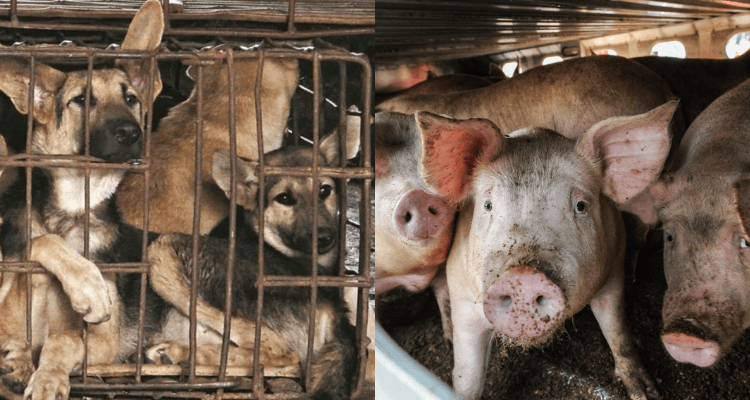The treatment of animals within various societal frameworks presents a complex and poignant narrative, particularly when juxtaposing the United States and Europe. While both regions harbor profound sentiments toward animal welfare, a salient observation emerges: Europe often enacts more stringent regulations and societal norms aimed at safeguarding the rights and well-being of animal populations. This dichotomy invites a meticulous exploration of the underlying cultural philosophies, legislative frameworks, and public perceptions regarding humane treatment of animals.
To begin with, the European Union has established a comprehensive array of laws and directives that fortify animal welfare. The Treaty of Amsterdam, enacted in 1997, explicitly acknowledges animals as sentient beings. This recognition underpins numerous regulations aimed at their protection. For instance, the EU has implemented stringent guidelines regulating farming practices, which include mandates for animal space, humane slaughter methods, and the banning of practices like battery cages for hens. In stark contrast, the United States has a more fragmented approach; animal welfare laws vary significantly across states and are often subsumed under broader agricultural policies that prioritize production over welfare.
Consumer attitudes also play a pivotal role in shaping animal treatment standards. In Europe, there is a burgeoning conscientious consumerism that favors humane products. The prominence of certifications such as Organic or Free Range demonstrates the public’s demand for higher welfare standards. This trend has fostered a marketplace that actively discourages unethical practices. Conversely, in the U.S., the “cheap meat” phenomenon remains prevalent, with a greater emphasis placed on cost-effective production over humane considerations. This disparity in consumer behavior reveals deeper societal values regarding the relationship between humans and animals. European consumers frequently advocate for ethical sourcing, while the U.S. market often glamorizes convenience, thus overshadowing ethical concerns.
Additionally, European nations often engage in comprehensive educational initiatives focusing on animal welfare, starting from a young age. Programs that instill values surrounding kindness toward animals ingratiate children with concepts of empathy and responsibility. For example, many schools include lessons on the treatment of animals and the importance of wildlife conservation. In comparison, the U.S. education system often overlooks these critical discussions, resulting in a populace that may be less cognizant of animal welfare issues.
Moreover, the role of advocacy organizations and NGOs in the two regions diverges significantly. European organizations like PETA UK or the World Animal Protection Europe thrive within a robust support system that often influences policy-making at national and EU levels. These groups engage in high-profile campaigns, effectively mobilizing public sentiment to push for legislative reform. On the other hand, while U.S. organizations engage in similar advocacy, their impact is frequently stymied by opposing agricultural lobbies and the lack of a cohesive national legislation framework dedicated to animal welfare. This difference highlights the systemic challenges faced by activists in the U.S., reinforcing the notion of political and cultural variance between the two regions.
The disparity extends beyond legislative measures and consumer habits. Cultural attitudes toward animals significantly influence their treatment. In many European countries, animals are seen as companions or family members, deserving of moral consideration and humane treatment. This sentiment is demonstrated through pet ownership rates, veterinary care accessibility, and public support for animal rights initiatives. In the U.S., while there is a growing trend towards viewing pets as family, the ingrained traditions of hunting, factory farming, and animal exploitation still perpetuate a more utilitarian perspective on animal lives. This dichotomy between utilitarianism and compassionate stewardship not only shapes public policy but also influences individual behavior regarding animal welfare.
Furthermore, the exploration of wildlife conservation sheds light on another facet of this comparative analysis. European wildlife protection laws are often more stringent, with an emphasis on habitat preservation and biodiversity. Many countries have implemented extensive wildlife corridors and protected areas, fostering a societal ethos centered on coexistence with nature. The U.S. has made strides in conservation efforts, but political and economic interests often hinder progress, leading to controversial policies that prioritize development over the protection of ecosystems essential for wildlife.
Despite these differences, there is an undeniable global shift towards recognizing the need for improved animal welfare practices, spurred by growing awareness of ethical issues. Social movements, driven by younger generations, are challenging traditional norms in both regions. Activism now transcends borders, with local movements in the U.S. gaining inspiration from European successes, thus highlighting a potential for convergence in the discourse surrounding animal rights and welfare.
In conclusion, the examination of animal treatment across the United States and Europe reveals a rich tapestry of cultural, legislative, and advocacy dynamics. While Europe may lead in terms of comprehensive laws and consumer consciousness around animal welfare, the U.S. reflects a tumultuous landscape shaped by diverse interests and perspectives. As societies evolve and global awareness heightens, the potential for collaborative efforts in animal welfare could foster an environment where the humane treatment of animals transcends geographic boundaries, leading to a kinder world for all creatures.






